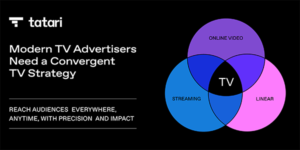 “Data-Driven Thinking” is written by members of the media community and contains fresh ideas on the digital revolution in media.
“Data-Driven Thinking” is written by members of the media community and contains fresh ideas on the digital revolution in media.
Today’s column is written by Brett Jensen, director of data partnerships, at iSpot.tv.
Is a hot dog a sandwich? When you break it down literally, it’s a piece of meat between bread, frequently dressed up with vegetables and condiments.
It’s a funny game of taxonomy not meant to actually redefine what everyone knows to be a sandwich but to examine how we classify words for things in our life.
The advertising industry is going through its own round of this game. Brands that are born in the digital space and speak to a largely millennial set of consumers are frequently labeled direct-to-consumer or DTC.
Frequently but not always VC-funded, these marketers often have sleek and simple brand imagery meant to convey exclusiveness and prestige while keeping a focus on sustainability and the feeling of shopping with a boutique that understands urban millennial values.
So what really makes a brand DTC? Let’s start by making a list of well-known DTC brands:
Away, Hims, Plated, Peloton, Omaha Steaks.
Wait, Omaha Steaks has been around since 1917, and none of the adjectives I mentioned describes the company. So is this hot dog a sandwich?
Omaha Steaks is certainly direct-to-consumer based on its sales model, but that’s not what we’re talking about when we think of Stitch Fix, Bombas or Parachute.
I believe the difference is that DTC is about brands that are direct and also disruptive.
For instance, Tommy John and ThirdLove specialize narrowly in men’s and women’s undergarments and have found a devoted millennial following selling better-fitting unmentionables.
Casper set the tone for a large number of competitors to follow in its successful wake by answering the question, “Can I buy a mattress online, please?”
Quip emphasizes a small, stylish approach to dental care that you don’t have to buy at Target – although, tellingly, you can now buy Quip toothbrushes at Target – that is much more affordable than competitors.
To stand out from older direct-response advertisers, I believe the definition of DTC brands should be expanded, to include the following traits:
- They were born in the smartphone age.
- They mostly try to appeal to millennials who shop by clicking.
- They disrupt an existing vertical possibly weighed down by brick-and-mortar stores and middleman vendors.
- Their presence is sleek, exuding an in-the-know appeal.
- They are direct-to-consumer, but not “As Seen on TV” or “Call 1-800 … ” They are distinctly different from legacy direct response.
- Their approach to advertising is digital-first, and growing slowly to traditional means.
So when we talk about DTC, let’s think about what we mean when we say the term. Yes, Jet.com sells direct to consumers, but it has a very different story than, say, Glossier.
A little focus on brand intention – which, for true DTC brands, is all about disruption – will go a long way toward ensuring that we’re all on the same page.



